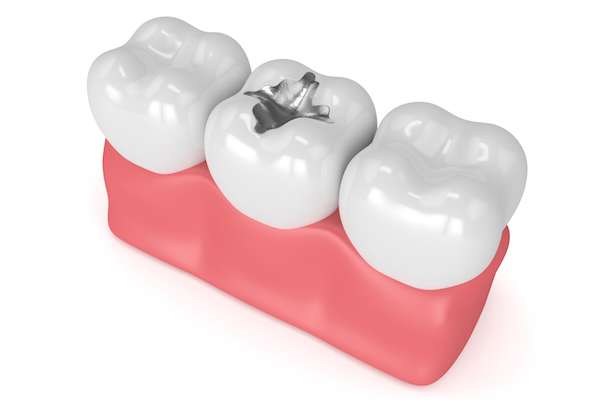 When a tooth develops decay, it can be restored to normal function through a dental filling by a family dentist. Decay that does not cause pain is often discovered through routine dental visits, but sometimes cavities are symptomatic. While the type of filling recommended by the dentist depends on the location and size of the damage, this simple dental procedure follows similar steps each time.
When a tooth develops decay, it can be restored to normal function through a dental filling by a family dentist. Decay that does not cause pain is often discovered through routine dental visits, but sometimes cavities are symptomatic. While the type of filling recommended by the dentist depends on the location and size of the damage, this simple dental procedure follows similar steps each time.
How a family dentist performs a filling
Dental fillings are common dental procedures that address the presence of cavities. When one is found during a dental exam, the dentist follows a standard set of procedures to correct the problem.
Evaluation and planning
During an annual dental check-up, a family dentist evaluates the patient's teeth for signs of decay. If any is present, the provider creates a plan of care to address it. This typically includes scheduling a time to remove the decayed part of the tooth using either a drill or laser and then filling the resulting hole with a composite resin, amalgam, gold, ceramic, or glass ionomer material. The chosen filling material depends on several factors, including the location of the cavity, age of the patient, size of the damage, budget, and preference of the patient.
Pain prevention
Since cavity removal can sometimes involve access to the nerve root of the tooth, pain prevention may be recommended before the procedure begins. Some patients who have a history of anxiety during dental procedures may also request additional medication to lessen nervousness.
Decay removal
After the area surrounding the decayed tooth is numb, the dentist uses a special handheld drill or laser to remove the damaged area completely. After the removal, the area is cleansed thoroughly to remove any remaining debris and prevent infection.
Filling process
Once all signs of decay have been removed from the tooth and the area has been disinfected, the resulting hole must be filled with a type of dental material to replace the missing portion. If the hole is deep enough to reach the pulp, a protective liner material may be placed over the pulp before the filling material is added. Most types of fillings are cured and hardened with a special light, after which the dentist polishes and smooths the surface of the tooth to make it ready for use.
Post-procedure care
After the filling process is complete, it may take a little while for the numbness to subside. During this time, it is important to take care while eating or drinking to avoid accidental damage to the lips. Further post-procedure care may involve a follow-up appointment to make sure everything went well with the process. Patients should receive instruction about recommended oral hygiene steps to learn how to avoid cavities in the future.
Conclusion
Fillings are one of the most common restorative procedures performed at a family dentist’s office. Most dentists follow a similar series of steps to ensure a positive outcome and help prevent future cavities from forming.
Request an appointment or call Davis & Dingle Family Dentistry at 803-567-1804 for an appointment in our Columbia office.
Recent Posts
A unique benefit of choosing a family dentist is that this professional care for the oral health of your entire household during every stage of life. The dental needs of children, teenagers, and adults vary, so a family dentist who can offer a comprehensive range of services for every family member is a valuable asset.Family…
For many people, a family dentist is the right choice for routine dental care. While this type of practice is usually equipped to handle the specific needs of pediatric patients, it is still able to provide thorough care for adults as well. Family dentists typically offer a wide variety of services in one location and…
According to the American Dental Association, little more than half of Americans visit a family dentist twice yearly, which is the frequency with which the ADA recommends checkups. This means that an overwhelming percentage — more than 40% — only schedule a visit when something is wrong. Individuals who fall into the latter category may…


